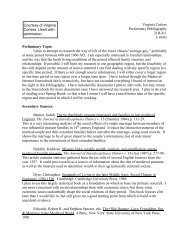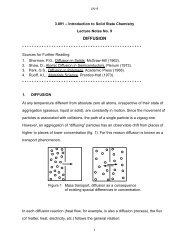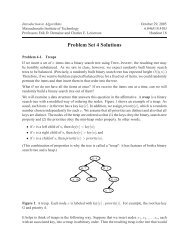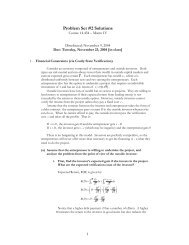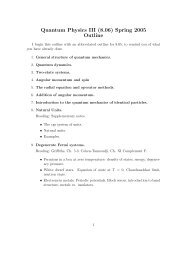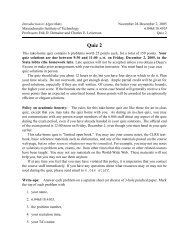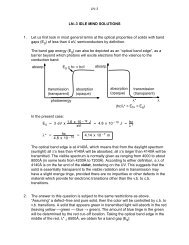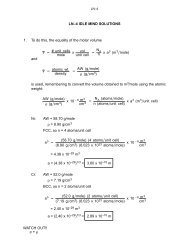3.091 â Introduction to Solid State Chemistry Lecture Notes No. 2 ...
3.091 â Introduction to Solid State Chemistry Lecture Notes No. 2 ...
3.091 â Introduction to Solid State Chemistry Lecture Notes No. 2 ...
- No tags were found...
Create successful ePaper yourself
Turn your PDF publications into a flip-book with our unique Google optimized e-Paper software.
LN–2in a covalent bond is unique <strong>to</strong> the extent that the Pauli exclusion principle precludesthe presence of additional electrons in the same orbital. Furthermore, the pairingphenomenon neutralizes the separate electronic spins of the single electrons, and theresulting electron pair with its zero spin momentum interacts less strongly with itssurroundings than do two independent electrons. [Covalent bonds are convenientlysymbolized through the dot notation, introduced first by Lewis (fig. 4).]LEWIS NOTATION:In LEWIS notation the covalent molecular bond is indicated as a BARor as two DOTS (standing for the paired electrons)H-H or H: HH: Cl :Cl: or Cl Cl or Cl Cl; CH 4 = H C HH::::Formal valence shell octet stabilization can be achieved by electron sharing,whereby one electron from each reaction partner share - spin paired - themolecular bonding orbital.Figure 4 Lewis notationQuantum mechanics makes it possible <strong>to</strong> rigorously describe these bonds for verysimple cases such as the hydrogen molecule, which is composed of two pro<strong>to</strong>ns andtwo electrons. It can thus be shown that the potential energy for the system reaches aminimum for a certain equilibrium distance between the nuclei, with increased electrondensity between the nuclei. At shorter distances between the nuclei repulsive forcesare found <strong>to</strong> increase very rapidly.In the hydrogen molecule (H 2 ), the two hydrogen a<strong>to</strong>ms are effectively linked <strong>to</strong>getherby one molecular electron orbital, termed a σ orbital, which comprises both a<strong>to</strong>ms andcontains two electrons. (fig. 5) Each of these two electrons can be considered <strong>to</strong> haveoriginated from one of the two a<strong>to</strong>ms - they were originally both 1s electrons with thesame spin value (s = +1/2). In the molecular orbit comprising both a<strong>to</strong>ms, the spins of15


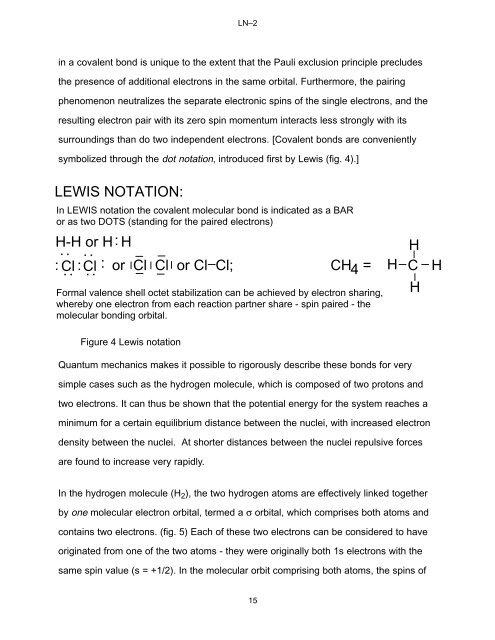
![18.03 Class 21, April 3 Fun with Fourier series [1] If f(t) is any decent ...](https://img.yumpu.com/51148985/1/190x245/1803-class-21-april-3-fun-with-fourier-series-1-if-ft-is-any-decent-.jpg?quality=85)

